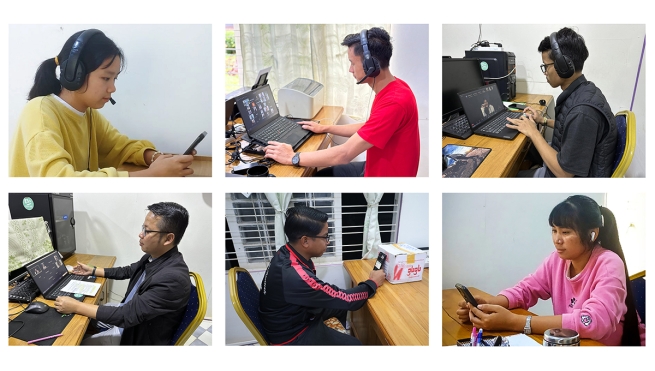About 100 local youth and the migrant youth workers in different countries participated in the programs on regular basis. Originally, it was initiated by a small group of Catholic youth themselves who came together on the regular zoom meeting once a week, i.e., on every Sunday evening, to pray and discuss their difficulties. As the time passed, they invited different priests and religious as resource persons on different topics or themes for their human, spiritual, intellectual, psychological, socio-political formation, etc. Of course, its main focus is the faith formation.
When they invited the Salesians as their resource persons, the youth delegate Fr. Camillus Suan, SDB thought about it as one of the SYM activities, and after joining them, Salesians also took turns once a month to lead the programs and provide the resource persons. It is a joint mission of the Salesian Social Communication Commission and the Youth Ministry Commission of the vice-province. The SYM has been leading this program on every Fourth Sunday of the month for about 3 years already. The new delegate for Salesian Youth Ministry, Fr. Mariano Soe Naing, SDB also continues this best practice.
Since it is well organized and very helpful to the youth, even some priests, nuns, religious formation houses, convents, boarding houses, and different groups gradually came to join it as well. The Procedures of the Zoom Meeting are as follows:
1. A youth leader announces the programmes
2. An appointed group of youngsters or a youngster sing/s the opening Hymn
3. An appointed person begins with a spontaneous or a traditional prayer
4. One of the leaders introduces the resource person or the speaker and invites him or her to take the floor
5. After the talk or input of the resource person, the participants are invited to react, to give feedbacks and to raise questions on the theme presented
6. Then, one of the leaders gives word of thanks to the resource person, to the youngsters who take responsibilities in the programme and to all the participants.
7. It is concluded by a final blessing of the priests who take part in it.
It is a very good youth catechesis platform that helps the youngsters to grow in their faith and awareness of their social responsibilities. It creates familiarity among the youth to encounter and share with each other. It also becomes a kind of youth-to-youth evangelization in this digital age, somehow making them to become digital missionaries. Let us thank the Lord for the gift of the internet.
A. Maung Maung, SDB



